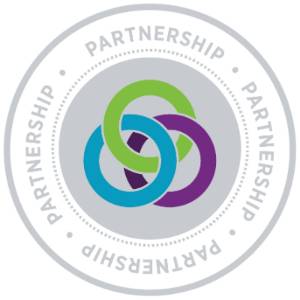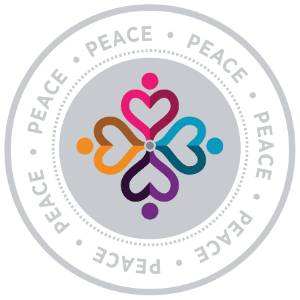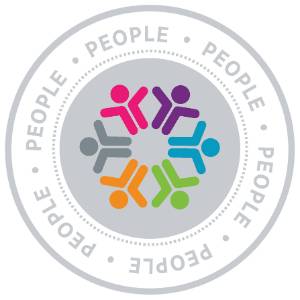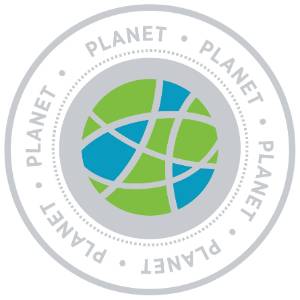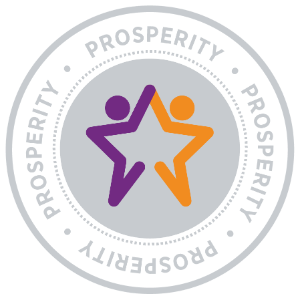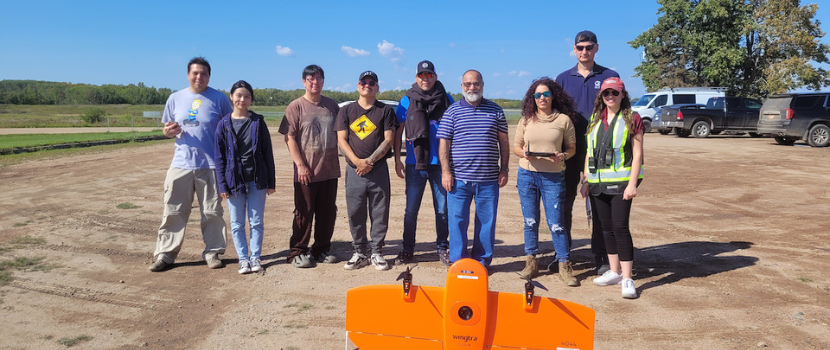
Maps to be created through GIS and AI-based drone technology
Saskatchewan Polytechnic's Sustainability-Led Integrated Centres of Excellence (SLICE), in collaboration with the Southern Alberta Institute of Technology (SAIT) Centre for Innovation and Research in Unmanned Systems (CIRUS), has initiated a three-year applied research project. In partnership with Frog Lake First Nation, this project utilizes geospatial tools, remotely piloted aircraft systems (RPAS) and AI technology to map natural resources, community infrastructures and zones vulnerable to natural and manmade disasters.
When SLICE researchers first connected with the community in September 2022, Frog Lake First Nation lacked digital maps, relying on old paper maps that no longer accurately represented their community. To help create a multi-purpose, interactive data-base of the natural asset and human built inventory, SAIT’s CIRUS is providing Frog Lake First Nation essential training using RPAS for data collection and Sask Polytech is leading geographic information system and data analysis training.
The goal is to empower Frog Lake First Nation to consolidate their community information into a convenient and versatile geodatabase and asset management system, facilitating a transition toward digital governance.
“They have all the knowledge about their community and lands and that knowledge exists with Elders. There is a desire to preserve that knowledge in digital form,” explains Dr. Abdul Raouf, research chair at Sask Polytech and project lead. “The end product will be a comprehensive digital inventory management system."
“RPAS technology can serve as a crucial ally for First Nations communities embracing new technologies to support environmental stewardship and safeguarding ancestral land. This technological prowess will facilitate a responsible approach to sustainable resource management,” explains Shahab Moeini, CIRUS scientific lead, national and international strategist, SAIT. “The integration of RPAS technology necessitates a thoughtful examination of regulatory frameworks through active involvement of the community. Careful considerations are paramount to guarantee the technological advancements align seamlessly with the rich cultural values and priorities of the community, fostering a harmonious and sustainable coexistence.”
Funding for the applied research project is provided by the College and Community Social Innovation Fund at the Natural Sciences and Engineering Research Council of Canada (NSERC). As part of the project, 10 members of Frog Lake First Nation have started RPAS and geographic information training. Satellite imagery, groundwork and meetings with community members will further enable the team to collect information required to build a comprehensive digital online mapping system, a visual representation of areas of cultural, environmental and economic importance.
“Maps are dynamic. Things change over time. We know our environment is changing. We know our weather system is changing. That means our older maps may not be accurate. It’s important to have a readily available and accessible digital inventory management system for quick updates,” states Raouf.
The project's digital asset management system will provide Frog Lake First Nation with readily available and accessible information to support planning, improve decision-making, heighten situational awareness and enhance coordination during critical situations. For example, maps can provide guidance to communities in establishing protective measures to take in case of natural disasters.
"Sask Polytech and SAIT’s applied research teams have had a positive impact on our community and are helping pave the way for extending these benefits to other private organizations, industries and neighboring reserves,” says Pete Quinnery, Lands and Resources manager at Frog Lake First Nation. “The impact of this project will enhance our search and rescue capabilities and help foster new local employment opportunities. What Abdul, Shahab and their team have accomplished is not just a service; it's a catalyst for growth, a beacon illuminating potential careers and community development."
“Identification is the first step towards preservation,” says Raouf. “This project is providing Frog Lake First Nation the opportunity to collect information and to map hunting grounds, forested areas, agricultural land and water bodies. Recording temporal changes over the last 20 years will allow the community to assess the impact of climate change on the community’s natural assets. This may allow them to develop preventive strategies.”
In addition to the benefits of finding information at their fingertips, the applied research project will enable members of Frog Lake First Nation to keep the information up to date independently. “We’re training local people while we create their asset information database. They won’t need to rely on anybody else. This will ultimately lead Frog Lake First Nation to digital data governance,” says Raouf.
“During this project, the SLICE and CIRUS team of data experts will integrate AI-based processes to enhance the gap detection and analysis of the created geodatabase. This integration will enable Frog Lake First Nation to automate the incorporation of future data, ensuring data accuracy, quality and enhancing the documentation process,” adds Moeini.
Eventually, trained members of Frog Lake First Nation could provide these mapping services to other First Nation communities, creating a community-led business initiative.
“Every community, every municipality needs to have their maps updated. Every community should have access to accurate maps,” notes Raouf.
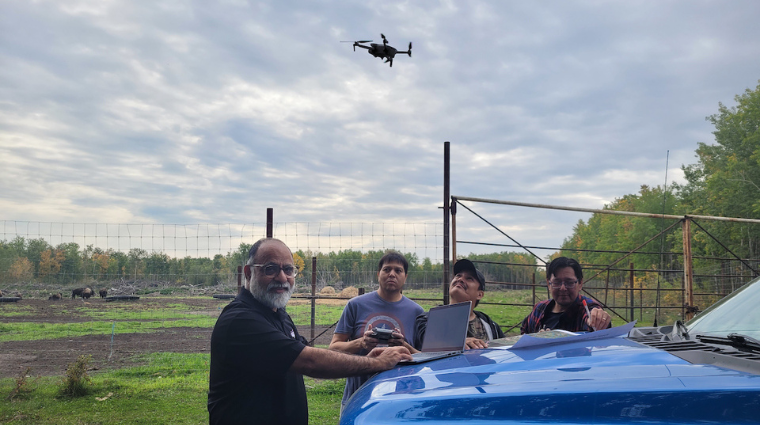
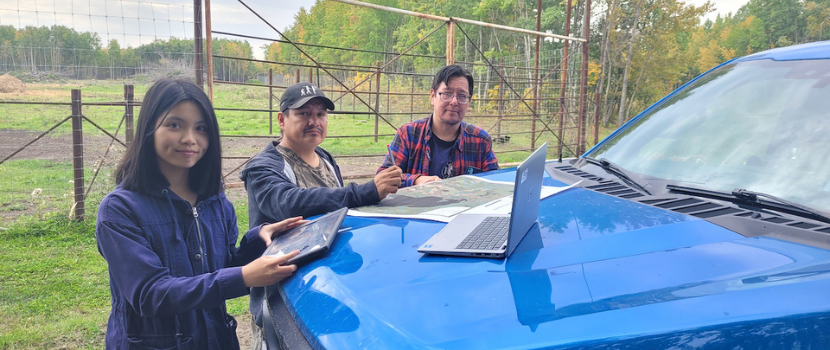
SLICE is based in Sask Polytech’s Faculty of Technology and Skilled Trades. SLICE's vision is to advance sustainability in Saskatchewan and beyond through collaborative applied research for the benefit of our economy, environment, society and future generations.
Learn more about applied research at saskpolytech.ca/research.
Saskatchewan Polytechnic is signatory to the SDG Accord. Sustainable Development Goal alignment is one of the ways Sask Polytech is leading the rise of polytechnic education.
